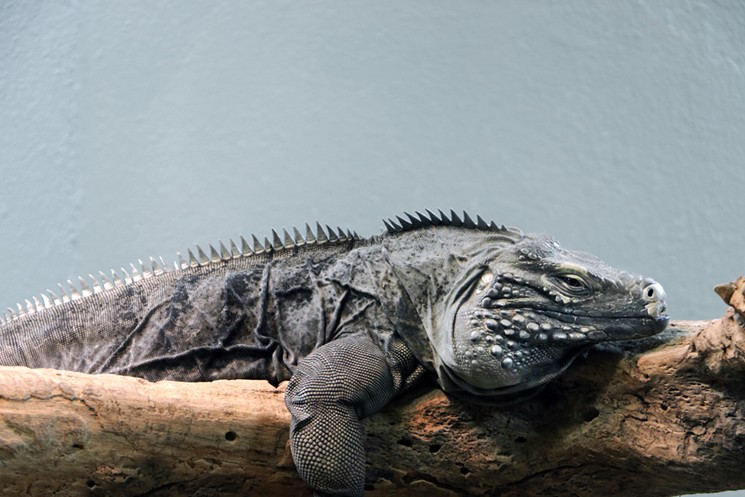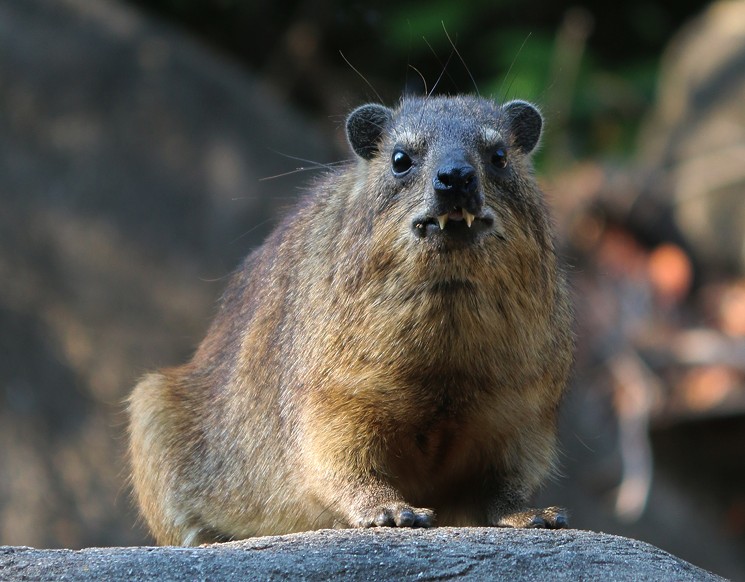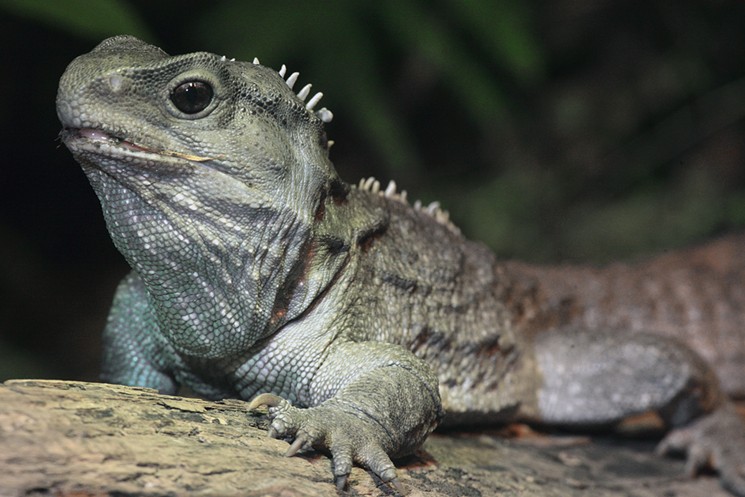Visitors have been flocking to the Dallas Zoo all summer to see Bahati, the lion cub who lent his image to the new Lion King. But on their tour of the so-called giants of the Savannah, many people overlook some of the zoo’s most interesting creatures.
The Dallas Zoo’s most popular residents “tend to be a lot of the big, charismatic, megafauna mammals that are in a lot of popular culture,” according to Senior Director of Animal Care Matt James.
This list includes the big cats, giraffes, elephants and hippos. James explains that their adorable babies and impressive size when fully grown are also factors in their popularity. Cute as they may be, on our visit to the Dallas Zoo last Saturday we took the path less traveled. With James’ help we identified 10 unsung animals at the Dallas Zoo and spent a morning getting to know their secret treasures.
“People consider the Midwest states to be flyover states, and I think in a zoo some of these species end up being those flyover species, or those walk-by species,” says James, a Nebraska native who joined the Dallas Zoo a year ago. “If they give those species the time of day, there are some amazing stories.” White-rumped shama
Bird’s Landing in the Lacerte Family Children’s Zoo is an experience not to be missed. Here visitors can buy bird seed-studded popsicle sticks and feed friendly cockatiels, as well as other rarer species of bird like the white-rumped shama.
The shama is a songbird native to India and Southeast Asia that has been negatively impacted by habitat loss and the pet trade. It is primarily black with an orange belly, and yes, a white rump.
It takes some work to spot one in the Bird’s Landing aviary, but when we do find one in a bush we are treated to its beautiful song. We don’t have any luck coaxing it out (the cockatiels are a lot more aggressive), but James says they’re generally motivated by food, so perhaps you’ll have more luck when you visit.
The opportunity to interact with animals like the white-rumped shama is the exception not the rule at the Dallas Zoo, but its zoologists are always looking for ways to make it happen.
“We work really closely with the animals and read their behavior, and determine even based on personality as well as species disposition which animals are great candidates for interacting with people,” James says. “Then we closely monitor the level that they interact with people to make sure that we’re not providing any undue stress or that they’re actually getting some enrichment out of their interaction.”
Klipspringer
Klipspringer means “rock jumper” in Dutch, but this species of dwarf antelope is actually from Africa. You can find them along the Gorilla Trail in the part of the zoo called Wilds of Africa.
“They’re these little bulldogs of antelope,” James says. “They’re very small but they’re very tough and they have these amazingly adapted feet where they’re basically standing on their tippy toes like a ballerina. And the hoof isn’t a solid hoof like you would see on a horse or another antelope species, it’s a rubberized sole so that it can grip onto very tiny rocks.”
Klipspringers can land on a surface as small as a silver dollar, and the Dallas Zoo has built rocks that mimic their natural habitat to give them plenty of room to practice. However, on the hot day we visit, the klipspringer is content to just stand stoically in front of a giant mister. Smart move.
Giant anteater
Tullah the 9-year-old giant anteater lives in the part of the zoo called ZooNorth. Giant anteaters can grow up to 7 feet long and use their 2-foot-long tongue to eat as many as 30,000 ants and termites a day.
“Their tongue is like a spaghetti noodle,” says social media director Chelsey Norris, our guide for the day.
Tullah eats her lunch from a giant artificial ant hill in the middle of her enclosure, although we don’t get to see it in action. In fact, Tullah is nowhere to be found.
Norris explains that all of the animals at the zoo have side areas where they can retreat if they’re not feeling social or the weather is unpleasant. At least the Galapagos tortoises in the next enclosure over don’t seem to mind the humidity. They’re happily munching away as visitors hand feed them lettuce.
Leaf-tailed geckos
The Dallas Zoo breeds two species of leaf-tailed geckos, the mossy leaf-tailed gecko and more interestingly named satanic leaf-tailed. Both are native to Madagascar and have the ability to convincingly mimic leaves and bark.
In fact, they’re so skilled at camouflage that visitors often ask why there’s nothing in their habitat. “I think our guests get a big kick out of it when they’ll ask a zoologist, ‘Hey, why is this habitat empty,’ and then the zoologist points out the gecko in there that they’ve been staring at for 10 minutes and haven’t found.”
During our visit to the zoo’s herpetarium, one of the satanic-leaf geckos is kindly stuck to the glass like a fish, making it easy to spot. But we are mesmerized when Norris points out a second one on a branch in the back of the habitat. Even looking right at it, it’s easy to lose the gecko’s silhouette.
Sometimes the leaf-tailed geckos’ defense mechanism even makes it hard for zoologists to care for them. “I struggle with it all the time,” James says. “Every day we’re checking on every animal multiple times in that day and if it takes you 10 times longer to find that one gecko then it slows your day down and it becomes a much bigger challenge. The elephant zoologist can look outside and easily find his elephants.”
Spectacled langur monkeys
The spectacled langur monkeys are so named because there are bald patches around their eyes that make them look like they’re wearing white glasses. The Dallas Zoo is home to the largest troop of these fashionable monkeys in North America, but they’re resting out of view on our visit. Ordinarily you can catch them in Primate Place across from the tiger habitat in Zoo North. Grand Cayman rock iguana
Lewis the adult male rock iguana is relaxing on a rock, occasionally making slight, robotic movements. The zoo has animatronic dinosaurs on display through Oct. 27, and Lewis almost looks like he’s part of the exhibit.
His serene expression belies the fact that there were only 25 of his kind left in the wild a few years ago. Thankfully for Lewis, conservation programs have grown the population of Grand Cayman rock iguanas up to roughly 600 today.
“The Grand Cayman rock iguana is one of the most critically endangered reptiles we care for,” Norris explains. You can find Lewis inside the herpetarium or just outside in his personal outdoor paradise.
Rock hyrax
The rock hyrax is a small mammal that is native to Africa and the Middle East. The Dallas Zoo has two, and they share a habitat with the klipspringers.
Norris says they’re pretty cute until they open their mouths to show their teeth. “They’re like demon groundhogs,” she says, making us slightly glad that they aren’t out and about when we stop by.
The craziest thing about these small, furry creatures is that their closest living relative is the elephant. Their common ancestor died about 50 million years ago, so they’ve had plenty of time to evolve in different directions, but those creepy teeth, much like an elephant’s tusks, are one clue.
White-backed vulture
Any Texan who has taken a road trip probably thinks they know plenty about vultures, but James says this is one species we should all appreciate.
“They’re amazingly adapted for what they do, and they play such an important role in our ecosystems,” James says. “They’re kind of like nature’s garbage men. They help keep the environment clean of disease.”
Some of the diseases vultures protect us from include anthrax, rabies and cholera. So we have plenty of selfish reasons to be concerned about their endangerment.
While the turkey vultures and black vultures common in Texas are not critically endangered, most species are, including the white-backed vulture at the Dallas Zoo. The greatest threat to vultures is poachers, because they often poison vultures’ food.
“Say an elephant’s drinking well is poisoned so that poachers can kill a bunch of elephants,” James says. “The vultures go and eat the elephants and then the vultures also die.”
Vultures are one of the primary 12 conservation programs that the Dallas Zoo participates in. “Raising awareness for vultures is at the top of our list right now,” he says.
The white-backed vultures can be seen with the saddle-billed storks just outside the Simmons Hippo Outpost. A few even serve as animal ambassadors, meaning they interact with guests.
“When people finally get to meet, they realize how smart they are and how many of the species are very striking, very beautiful animals,” James says.
Okapi
The Dallas Zoo has one of the most successful breeding programs in the world for this critically endangered species that is so elusive it wasn’t even discovered until 1901, earning the nickname “African unicorn.”
The okapi’s native habitat is deep in the forest of the Democratic Republic of Congo, but the Dallas Zoo has five of them. Most zoo members will be aware of their significance, but these giraffe relatives are still a mystery to the average zoo-goer.
“A lot of people ask us if they’re a mix of some other animals, but they’re their own species,” James says.
The confusion comes from the okapi’s giraffe-like head and the zebra-like camouflage on their legs. The zoo is doing its best to raise awareness about the species and the big role they play at the Dallas Zoo, which is partly why their enclosure surrounds the Simmons Hippo Outpost.
“I think we’ve strategically placed them so people are more and more aware of them,” James says.
Tuatara
You can’t tell by looking at them, but the tuatara is actually the closest thing to a dinosaur many of us will ever see. They’re the sole remaining member of a branch of reptiles that originated 200 million years ago and they virtually stopped evolving about 100 million years ago.
“They are quite literally a living fossil,” James says.
The tuatara we see in the zoo’s herpetarium might as well be a fossil. He sits totally motionless until a drop of water falls from above and lands on his third eye.
Yes, a third eye is one of the tuatara’s most interesting features. Although barely perceptible, it is complete with a retina, lens and nerve endings.
The Dallas Zoo is only one of four zoos in the U.S. approved to care for these endangered reptiles native to New Zealand. “Our reptile team is very well-renowned throughout the United States and throughout the world,” James says.
The zoo’s purpose in caring and breeding endangered species, whether it’s okapi or tuatara, is to create an ark population. “If or when these animals go extinct in the wild, we still have this really sound genetic line in the United States,” James says.
[
{
"name": "Air - MediumRectangle - Inline Content - Mobile Display Size",
"component": "18855504",
"insertPoint": "2",
"requiredCountToDisplay": "2"
},{
"name": "Editor Picks",
"component": "17105533",
"insertPoint": "4",
"requiredCountToDisplay": "1"
},{
"name": "Inline Links",
"component": "18349797",
"insertPoint": "8th",
"startingPoint": 8,
"requiredCountToDisplay": "7",
"maxInsertions": 25
},{
"name": "Air - MediumRectangle - Combo - Inline Content",
"component": "17105532",
"insertPoint": "8th",
"startingPoint": 8,
"requiredCountToDisplay": "7",
"maxInsertions": 25
},{
"name": "Inline Links",
"component": "18349797",
"insertPoint": "8th",
"startingPoint": 12,
"requiredCountToDisplay": "11",
"maxInsertions": 25
},{
"name": "Air - Leaderboard Tower - Combo - Inline Content",
"component": "17105535",
"insertPoint": "8th",
"startingPoint": 12,
"requiredCountToDisplay": "11",
"maxInsertions": 25
}
]





















